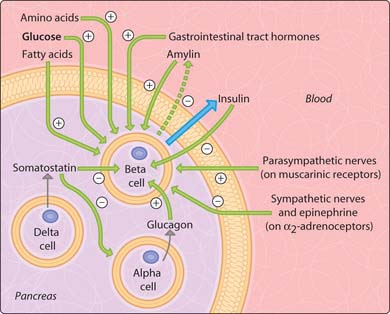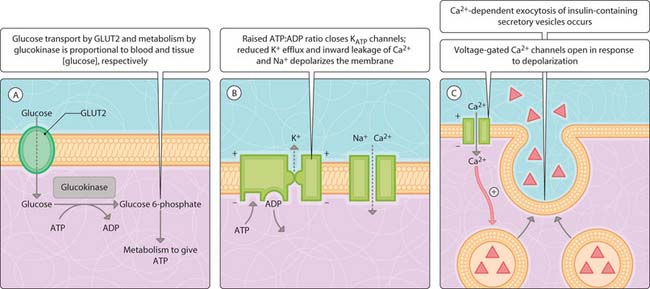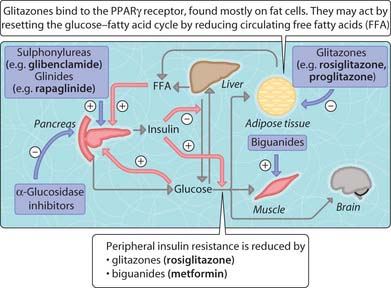25 Diabetes mellitus
The stimulation of glucose uptake in peripheral tissue(e.g. skeletal muscle and adipose tissue) is an important function of insulin (see Fig. 1.12). The inability to regulate plasma glucose in the normal physiological range is central to diabetes mellitus, accounting for the hyperglycaemia, increase in thirst (polydipsia), increased glucose in urine (glycosuria) and large volumes of dilute urine (polyuria). High plasma glucose leadsto retinal disease, peripheral nerve dysfunction, atherosclerosis and peripheral vascular disease. Type I diabetes is an autoimmune disease that leads to the destruction of pancreatic beta cells in the young. In contrast, type II diabetes affects adults and has a number of predisposing factors, including genetics, obesity and sedentary lifestyle. It is also characterized by impaired insulin secretion from pancreatic beta cells coupled with an inability of peripheral cells to respond to insulin, commonly referred to as insulin resistance. The mechanism of this resistance include defects in glucose transport mechanism, glucotoxicity and lipotoxicity. The release of insulin from beta cells of the pancreas is regulated by plasma glucose (Figs 3.25.1 and 3.25.2) and a range of pharmacological agents can be used to reduce hyperglycaemia in diabetes mellitus (Fig. 3.25.3).
< div class='tao-gold-member'>








